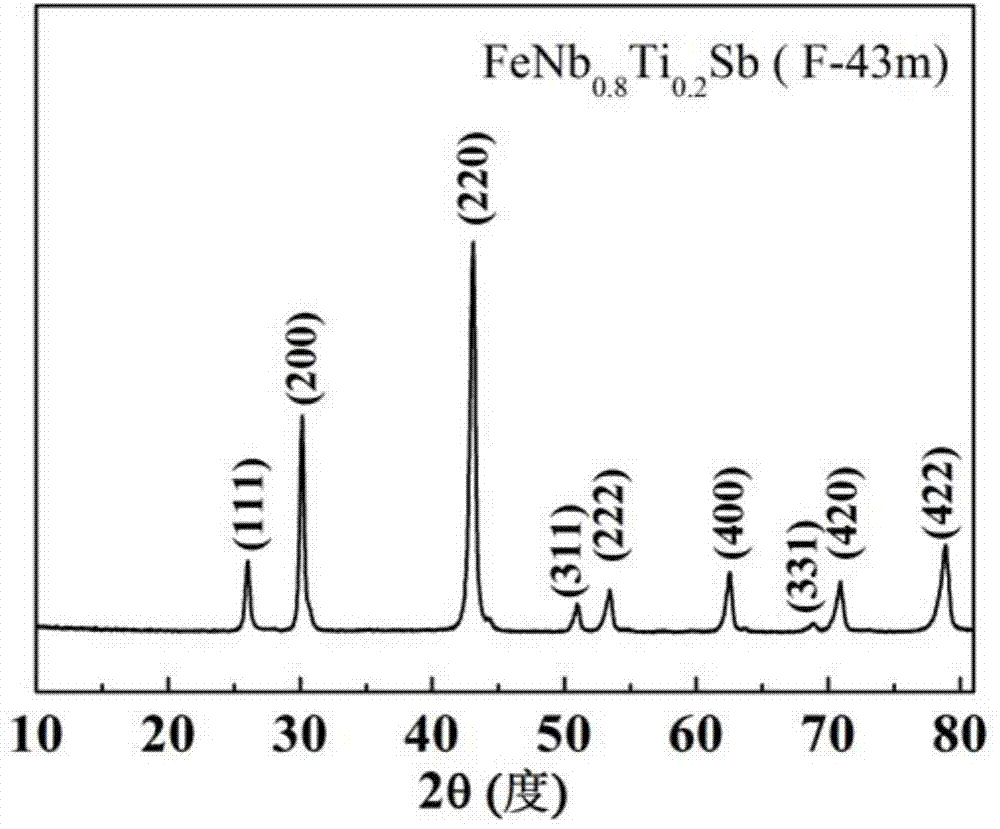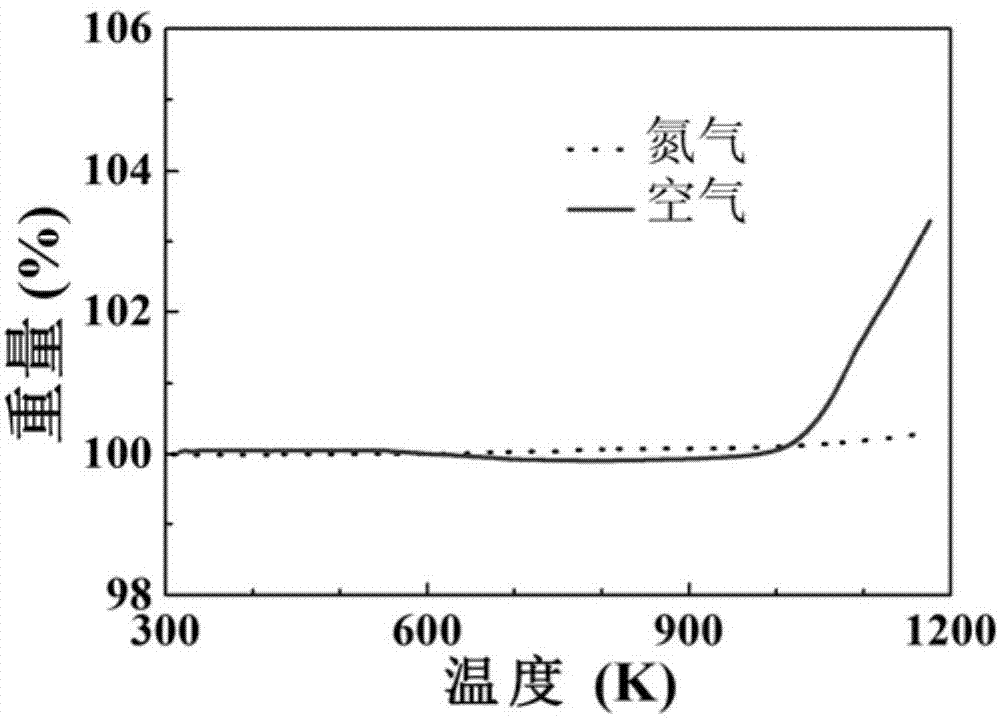P type FeNbTiSb thermoelectric material with high optimal value and preparation method thereof
A technology of thermoelectric materials and raw materials, applied in the direction of thermoelectric device lead-out wire materials, thermoelectric device manufacturing/processing, etc., can solve the problems of few researches on thermoelectric materials, and achieve abundant reserves, high production efficiency and short production cycle Effect
- Summary
- Abstract
- Description
- Claims
- Application Information
AI Technical Summary
Problems solved by technology
Method used
Image
Examples
Embodiment 1
[0030] Raw materials were stoichiometrically compared to FeNb 0.8 Ti 0.2 After Sb is calculated and weighed, it is placed in a copper tube protected by Ar gas, and the high-frequency melting method is used to repeatedly smelt the ingot for 3 times to obtain an ingot, and then the ingot is crushed by a mechanical ball milling method to obtain submicron particles, followed by spark plasma sintering Methods The final samples were obtained by sintering at 850°C and 65MPa for 10 minutes.
[0031] Adopt RigakuD / MAX-2550PC type X-ray polycrystal diffractometer (XRD) to carry out phase analysis to the sample that present embodiment makes, as figure 1 Shown, and confirmed as the FeNbSb-based structure, that is, the cubic structure (F43m), the space group number is 216.
[0032] According to the thermal diffusivity measured by Netzsch LFA-457 laser pulse thermal analyzer, the specific heat measured by Netzsch DSC-404 differential specific heat meter and the density of the material, th...
Embodiment 2
[0037] Raw materials were stoichiometrically compared to FeNb 0.76 Ti 0.24 After Sb is calculated and weighed, it is placed in a copper tube protected by Ar gas, and the high-frequency melting method is used to repeatedly smelt the ingot for 3 times to obtain an ingot, and then the ingot is crushed by a mechanical ball milling method to obtain submicron particles, followed by spark plasma sintering Methods The final samples were obtained by sintering at 850°C and 65MPa for 10 minutes.
[0038] The thermal conductivity of the sample prepared in this embodiment is κ=4.6W·m at 1100K -1 K -1 .
[0039] The thermoelectric potential coefficient of the material at 1100K was measured by Linses LSR-3 equipment α=198μV / K, and the conductivity σ=11.3×10 4 S / m.
[0040] According to the above measured value according to zT=(α 2 σT / κ), the zT value of the sample prepared in this embodiment is about 1.06 at 1100K.
Embodiment 3
[0042] Raw materials were stoichiometrically compared to FeNb 0.84 Ti 0.16 After Sb is calculated and weighed, it is placed in a copper tube protected by Ar gas, and the high-frequency melting method is used to repeatedly smelt the ingot for 3 times to obtain an ingot, and then the ingot is crushed by a mechanical ball milling method to obtain submicron particles, followed by spark plasma sintering Methods The final samples were obtained by sintering at 850°C and 65MPa for 10 minutes.
[0043] The thermal conductivity of the sample prepared in this embodiment is κ=4.8W·m at 1100K -1 K -1 .
[0044] The thermoelectric potential coefficient of the material at 1100K was measured by Linses LSR-3 equipment α=219μV / K, and the conductivity σ=8.6×10 4 S / m.
[0045] According to the above measured value according to zT=(α 2σT / κ), the zT value of the sample prepared in this embodiment is about 0.96 at 1100K.
PUM
| Property | Measurement | Unit |
|---|---|---|
| diameter | aaaaa | aaaaa |
| diameter | aaaaa | aaaaa |
Abstract
Description
Claims
Application Information
 Login to View More
Login to View More - R&D
- Intellectual Property
- Life Sciences
- Materials
- Tech Scout
- Unparalleled Data Quality
- Higher Quality Content
- 60% Fewer Hallucinations
Browse by: Latest US Patents, China's latest patents, Technical Efficacy Thesaurus, Application Domain, Technology Topic, Popular Technical Reports.
© 2025 PatSnap. All rights reserved.Legal|Privacy policy|Modern Slavery Act Transparency Statement|Sitemap|About US| Contact US: help@patsnap.com



